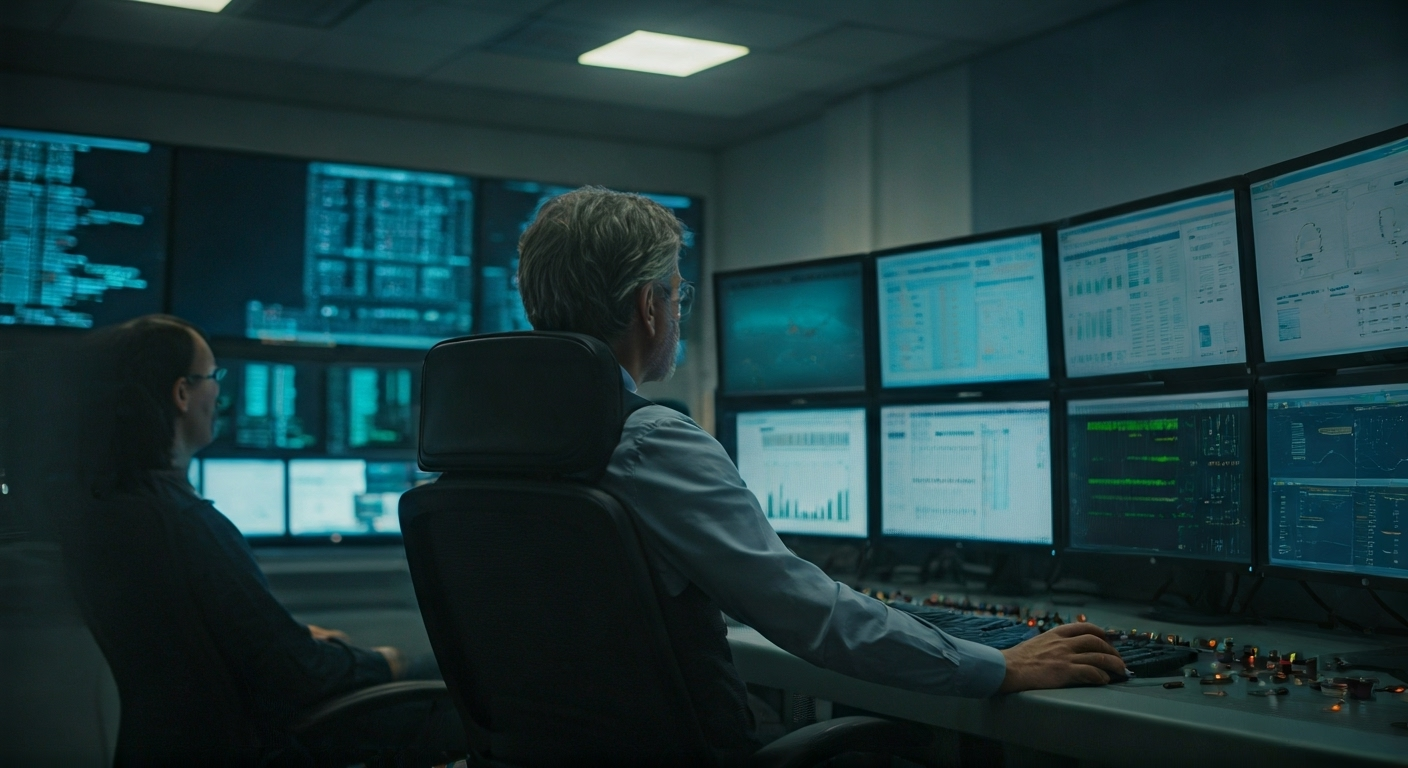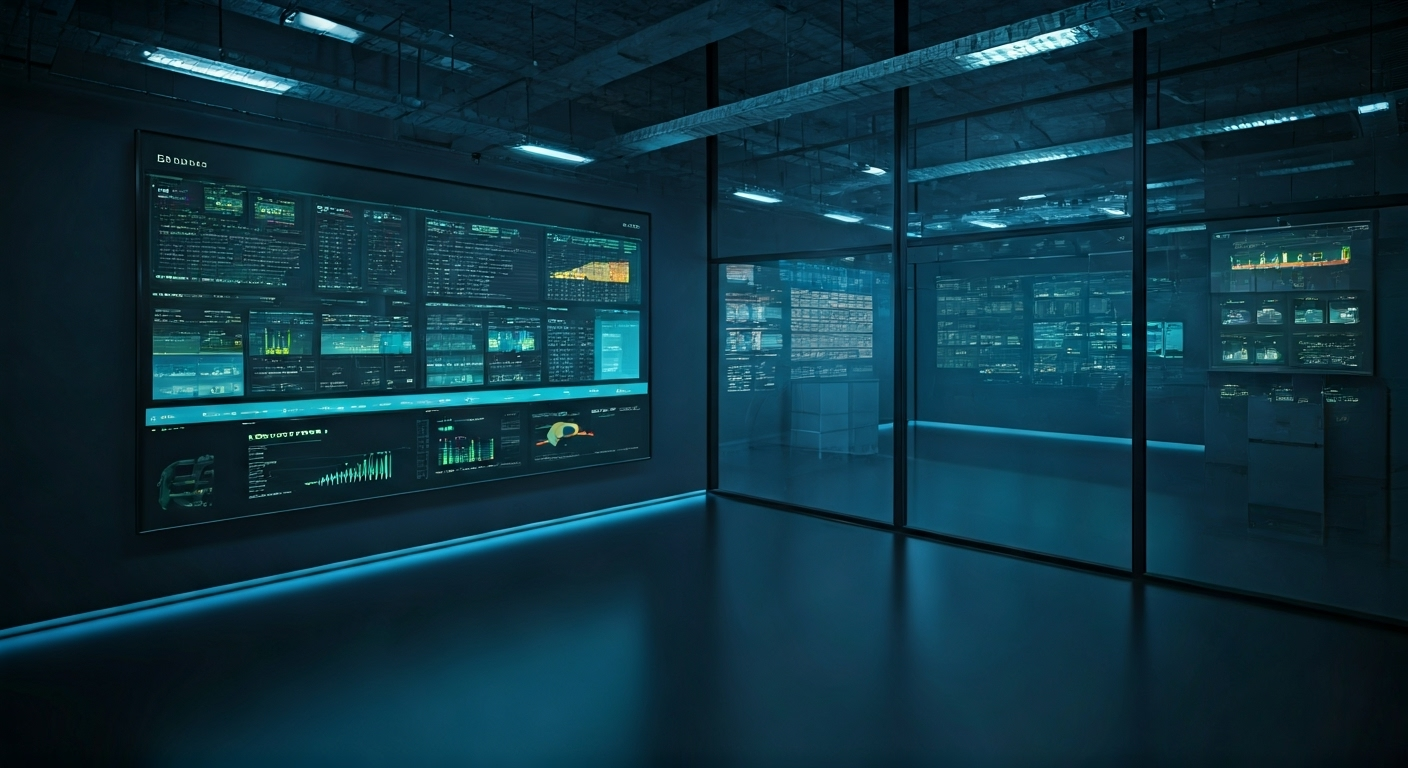Comprehensive Energy Data Management for Modern Utilities
Comprehensive Energy Data Management for Modern Utilities

Key Highlights
- Energy Data Management (EDM) is about the systematic collection, analysis, and interpretation of energy data. This helps to make energy consumption and costs lower.
- EDM can make your operations run better. It helps with equipment reliability and also cuts down energy waste.
- With EDM, it's easier to follow the rules and support sustainability. It helps lower greenhouse gas emissions and reduces your carbon footprint.
- New tech, such as AI, IoT, and cloud systems, makes EDM even stronger. You get real-time analytics and useful insights into your data management.
- By working with smart grids and utility setups, your data management systems become more reliable and strong.
- Parts like data acquisition, validation, and making sure data quality is good are the basic building blocks for managing energy well.
Introduction
In today’s changing energy industry, data management has become very important for modern utilities. Good energy data management helps companies make smart choices. It also helps improve operational efficiency and save costs.
When utilities use technology and analytics, they can get the most out of their energy usage. They are also able to meet sustainability goals and follow the rules.
As the energy industry grows, intelligent systems and new ideas are changing the way things work. Now, energy data management is a key to success in this fast-moving market.
Understanding Energy Data Management in Modern Utilities

Data Management (EDM) is very important in the energy industry today. It helps utilities by making sure the systematic collection, validation, and study of energy data all work well. This gives companies the tools and insight to make better choices about how they use energy. It lets them use less, save money, and get more out of their work.
There are a lot of challenges for utilities to handle. Operational needs are always rising, and there are now more stringent regulations than before. EDM helps by making work easier and smoother. It also plays a key part in supporting sustainability and energy efficiency efforts. EDM can help with cost control and following the rules. If you understand how important energy data management is, you can make stronger plans and come up with new ideas.
Defining Energy Data Management and Its Core Functions
Energy Data Management (EDM) is about the organised handling and review of energy data. The main goal is to build a simple plan for utilities to track how the energy gets used, see what people will need next, and make good use of what is there. When you get the right view of energy usage, EDM can help lower costs and make sure all plans fit with the company’s sustainability goals.
The most important part of EDM is data collection. This happens through sensors and meters to give real-time updates. When the data is collected, it is checked with smart tools to make sure it is true and all mistakes are fixed. After this check, current reports are made to show trends, problems, and places that need a look.
The way data management works, with systematic collection and deep checking, leads utilities to make better decisions. EDM is great for keeping work smooth, getting the best from equipment performance, and helping meet easy rules. This all shows why EDM is so useful for cost reduction, strong operations, and finding new ways to reach long-term sustainability.
Differentiating Between Energy Management and Energy Data Management
Energy management and energy data management are close to each other, but they are not the same thing. Energy management is about making plans to lower energy consumption and to help with sustainability. Energy data management, or EDM, looks at how you handle energy data in the right way, so you can make good choices.
Energy management is about taking action before things go wrong. It uses different tools and ideas, like planning out your budget or choosing cleaner energy, so you can change how people use energy. At the same time, energy data management is to collect, check, and understand energy data. This helps find where things are not working well and shapes what people do next.
Energy management and energy data management work together. When you have real-time energy data from EDM, it can help a lot in your energy planning. This makes sure that the steps you take are right on target. Used together,
energy management and data management create a strong system. Energy data management is the base that helps build good energy rules and acts as a guide for better energy use and sustainability.
The Strategic Importance of Energy Data Management

The use of Energy Data Management (EDM) in utilities is changing the game for the industry. EDM makes it easy to see the details of how energy is used. This helps companies make special plans for saving money and getting better at the way they work. Data management of energy data is now key for good results.
EDM helps a lot with reaching sustainability goals too. With the right data, utilities can bring down carbon footprints and follow rules about emissions in a simple way. Because of this, people and businesses can see long-term benefits. It gives something good to all their stakeholders. EDM stands out as a smart move for the future because it boosts operational efficiency and helps everyone get better results.
Enhancing Operational Efficiency and Reliability
Operational efficiency gets better when you use clear energy data management systems. With real-time data collection, utilities can keep an eye on equipment performance all the time. This helps the team spot problems early and take action fast. It cuts down on downtime and helps things run smoothly.
Reliability also depends on good management systems. EDM gives you accurate numbers about energy use and spots trouble before it turns into big problems. By using smart and predictive technology, you can plan for repairs at the right time. This stops things from breaking down without warning and helps avoid energy waste.
Plus, honest reporting in EDM helps you get the most out of your equipment. It leads to smoother workflows, which means you spend less to run everything and performance goes up as well. These workflows also help to keep your output steady and make your machines last longer. So, EDM plays a big role in making sure utilities can be counted on to work well.
Supporting Regulatory Compliance and Sustainability Goals
Energy data management helps utilities follow strict rules in the energy industry. By collecting and checking information about greenhouse gas emissions, they can see if they meet the rules and avoid big fines. It also gives more transparency, as reports are made to show that everything is in line with the set guidelines.
Sustainability gets a boost with EDM. Utilities can find where the most carbon comes from and fix those areas, using good data to change how people use energy. This helps everyone use resources in a way that matches environmental goals, like lowering emissions.
EDM also helps in making better decisions. It lets utilities balance following rules with making good choices for the environment. When sustainability is part of daily work, utilities do more than just follow laws; they set an example for responsible energy use.
Key Components of an Effective Energy Data Management System
An energy data management system brings together different modules and technologies to help run things smoothly. One big part of this system is real-time data acquisition using sensors and meters. The sensors help to make sure the data you get is accurate and up to date. This lets you keep a close eye on how energy is used and collected all the time. There are also checks in place to make sure the data is good, which helps remove problems with the data so you only get useful insights.
These systems use analytics to deal with a lot of different data. The analytics tools help spot where things could work better, and they can also tell you how much energy you might use later. With good data management, these systems are also built to grow with busy and changing energy markets. This means they give the right solutions so a business can work towards both its day-to-day needs and bigger goals for rules and sustainability, all at the same time.
Data Acquisition, Validation, and Quality Assurance
Data acquisition forms the cornerstone of effective EDM systems, relying on advanced sensors and devices to gather real-time information about energy consumption. Validation processes verify this data, ensuring its accuracy and usability for actionable results. Quality assurance methods refine these insights further, removing inconsistencies.
| Component | Details |
|---|---|
| Data Acquisition | Sensors and meters continuously collect consumption data. |
| Validation Processes | Utilizes algorithms to check accuracy by ruling out anomalies. |
| Quality Assurance | Applies configurable rules to enhance the credibility of stored datasets. |
These combined processes
empower utilities to operate with precision, aiding strategic decisions that drive efficiency and compliance across the energy landscape.
Integration with Utility Infrastructure and Smart Grids
The smooth work between EDM systems and the utility infrastructure can change the way we handle energy management today. When you connect EDM systems to smart grids, utilities are able to watch energy consumption as it happens, predict what people will need, and keep resources steady even when many people are using power at the same time.
Smart grids help the systems talk to each other better by linking EDM to devices that use IoT. With this setup, you can look at both energy consumption data and equipment performance all at once. This joined system makes operations stronger and helps people use energy in a better way.
Also, utility systems that work together can help speed up what you do in a crisis. When you can see all the details with clear data, you know where the trouble is fast. That way, you can do something before bigger problems start. This good team between the infrastructure and EDM systems is what helps everything work well and stay steady.
Leveraging Technology for Advanced Data Insights
Technology pushes the way data management and energy data work together in energy management systems. When you bring in analytics and dashboards, EDM helps people working with utilities to look at large sets of data. This makes it easier to see patterns and trends. With these tools, you get to make choices in real time. You also get helpful visualisation and ways to guess what happens next.
When you use the latest things like AI, IoT, and cloud computing, EDM systems give new and better features. These tools help those in utilities to push up energy efficiency. At the same time, they work towards meeting sustainability goals. So, that is why technology is the key behind today’s energy management systems.
Role of AI, IoT, and Cloud Computing
Artificial intelligence, or AI, is changing EDM in many ways. It looks at large amounts of data and finds patterns and problems in the way people use energy. This helps companies make better choices. AI tools can also guess what will happen next with energy use. This means they can use energy better and save more.
The Internet of Things, or IoT, helps EDM work better by letting devices connect to each other. Sensors gather real-time data, and IoT networks help different systems stay in touch all the time. This makes data collection more accurate. It also helps compare the way different systems work.
Cloud computing lets EDM systems grow and save money at the same time. The cloud stores lots of data safely, and people can get to it from anywhere. Cloud-based systems work better and help companies manage real-time operations. Because of these new ideas, the way EDM can grow and change is much better now.
Real-Time Analytics for Proactive Decision-Making
Real-time analytics is changing how utility companies make decisions. It gives people immediate information about what is being used through easy-to-read dashboards. People can see energy needs when they go up and plan ahead. This helps the company avoid power outages.
This technology helps people plan for the future. They use analytics to spot trends before they become problems. For example, it helps the company see if equipment performance may dip or if sustainability goals will not be met. Analytics helps every part of the operation run better.
Interactive dashboards are the center of good decision-making. They mix old data with new live results to show important trends. These insights help companies work smoothly, so they are more accurate and dependable. Real-time analytics and dashboards make it easier to catch problems early. This makes work better and uses data to find new ways for improvement.
Conclusion
To sum up, the right energy data management system is important for today’s utilities. It helps them be efficient and work towards sustainability. When utilities use new tools like AI, cloud computing, and IoT, they can make their services more steady. These tools also help them follow rules and support their own sustainability goals. Good energy data management helps collect energy data faster. It also checks quality and lets people use analytics to look at real-time data, so they can make fast choices and avoid problems before they get big. As things change in the energy world, using these ways will help your utility keep up and stay ahead of others. If you want to improve how you handle data management or energy data, or make sure you’re meeting all the rules for regulatory compliance and sustainability, feel free to contact us. We can help you with ideas that fit your needs.
Frequently Asked Questions
What are the main benefits of energy data management for utilities?
Energy data management gives utilities the tools they need to improve energy efficiency and keep costs down. With better control over their energy data, they can follow important rules and be on track with regulatory compliance. This system also shows details about energy usage. It helps people to use their resources in a better way. As a result, they can spend less money and work towards their sustainability goals.
How does energy data management contribute to sustainability?
EDM helps with sustainability because it lowers the carbon footprint. It looks at energy consumption and tracks greenhouse gases. This lets utilities know what they can do to be more eco-friendly. When people use less energy in wasteful ways, there are fewer emissions. This helps the environment and supports good, sustainable practices.
What challenges do utilities face in implementing data management systems?
Utilities face many hurdles. They need to follow strict rules. They also have to manage big workflows. Another challenge is to keep energy data safe. In the end, using technology is key. This helps utilities deal with tough tasks. It makes handling energy data easier and safer. With good tools, they can work well even with tough regulations and big workflows.
Which technologies are transforming energy data management?
Technologies like AI, sensors, IoT, and cloud systems push new ideas in EDM. These tools help with real-time monitoring, quick analytics, and easy scaling. They let people see clear energy use and manage things better. This is now changing how energy consumption is handled by utilities.
How can utilities ensure data security and privacy in these systems?
Utilities can use ISO protocols, special ways to lock down data, and safe systems in the cloud to protect energy data. They can also have audits often and strong workflows to keep things in line and make sure privacy is strong. These steps help keep edm systems honest, safe, and trusted.



